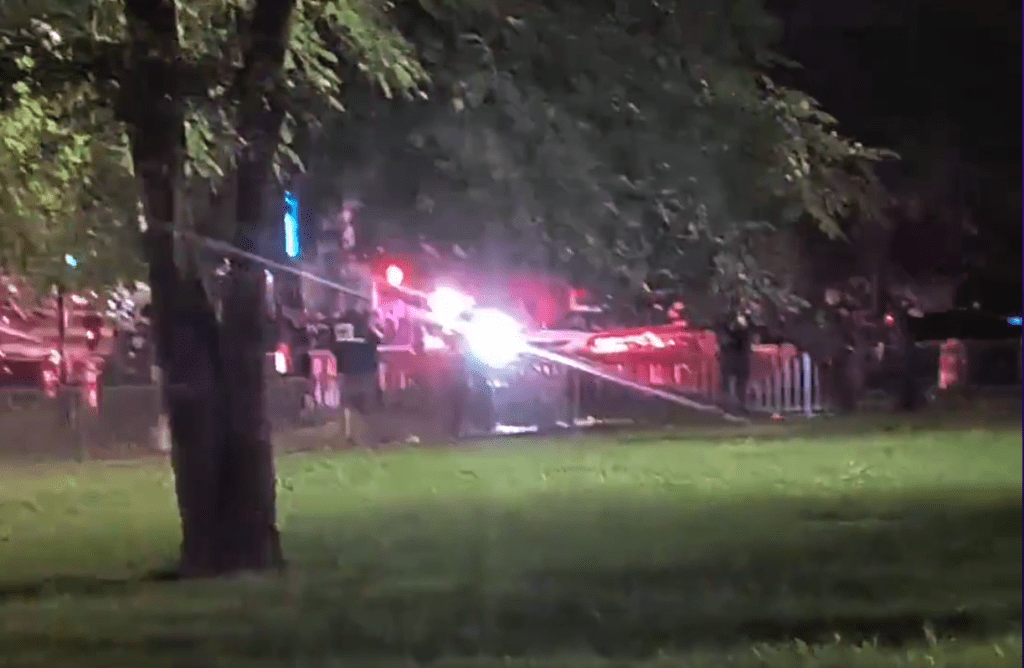A 62-year-old man was shot and killed by police in East Harlem early Sunday morning after he refused to drop a gun despite multiple warnings. The incident took place at the Washington NYCA houses on the corner of Third Avenue and 104th Street just after 12:30 a.m. Responding officers fired a single round at the man, hitting him in the torso and leg, resulting in his death. Witnesses reported hearing one shot followed by multiple shots, which they attributed to the police. EMS attempted CPR at the scene before transporting the suspect to a nearby hospital, where he was pronounced dead.
One witness criticized the police for using lethal force instead of a taser, questioning why officers always resort to guns in these situations. The witness, who was not identified, expressed concern over the use of deadly force in cases where a taser could potentially de-escalate the situation. The suspect’s race was also mentioned by witnesses, who stated that he was a black man. A gun was recovered at the scene by police following the shooting. The incident highlights ongoing concerns over police use of force and the need for additional training and de-escalation tactics to prevent unnecessary deaths.
The NYPD responded to a call reporting a man with a gun at the housing complex, leading to the fatal encounter between the suspect and officers. Despite repeated warnings to drop the weapon, the suspect did not comply, resulting in the use of deadly force by police. The decision to shoot the suspect was made in the heat of the moment, raising questions about police training and protocols for handling situations involving armed individuals. The incident has reignited debates about the use of tasers as an alternative to firearms in situations where lethal force may not be necessary.
This latest incident adds to the growing number of fatal shootings involving police and suspects who are armed or perceived to be armed. Each case raises concerns about the use of force by law enforcement and the potential for unnecessary deaths when dealing with potentially dangerous individuals. The presence of guns in these situations complicates the decision-making process for officers, who must weigh the risks of using lethal force against the potential consequences of not acting quickly enough to neutralize a threat. The tragic outcome of this encounter underscores the need for improved training and tactics to minimize the loss of life in police interactions with the public.
Community members and activists are likely to voice their concerns about the use of force in this incident, calling for increased transparency and accountability from the NYPD. Calls for police reform and oversight may intensify in response to this latest shooting, as questions are raised about the circumstances leading up to the deadly confrontation. The victim’s family and loved ones may seek answers and justice for his death, further fueling demands for a thorough investigation and potential reforms within the police department. The aftermath of the shooting will likely prompt discussions about systemic issues within law enforcement and the need for greater accountability in cases of police-involved shootings.


